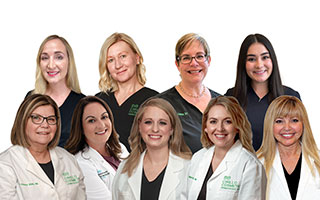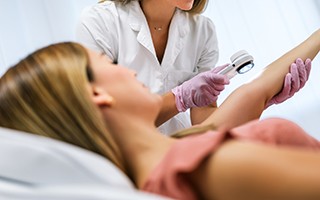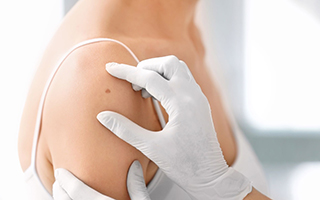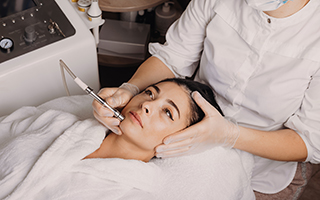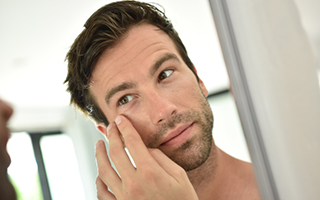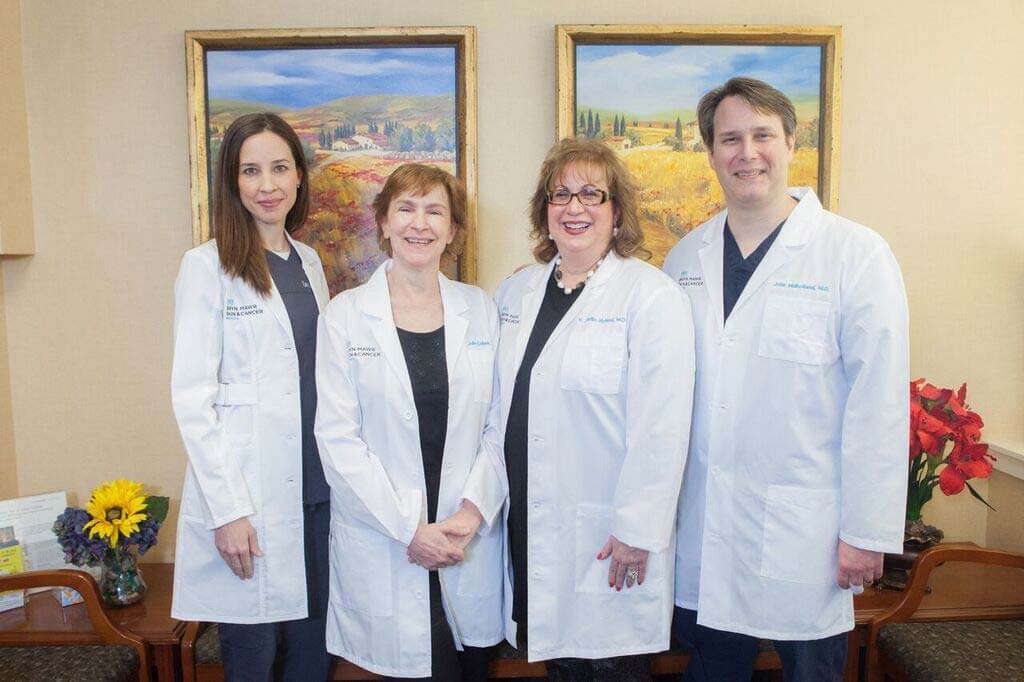Victoria A. Cirillo-Hyland, MD, FAAD, FASDS
Julia H. Cohen, MD, FAAD
Kara D. Capriotti, MD, FAAD
John K. Mulholland, MD, FAAD
Bryn Mawr Skin and Cancer Institute
919 Conestoga Road, Building 2, Suite 106
Bryn Mawr, PA 19010
610-525-5028
cirilloinstitute.com
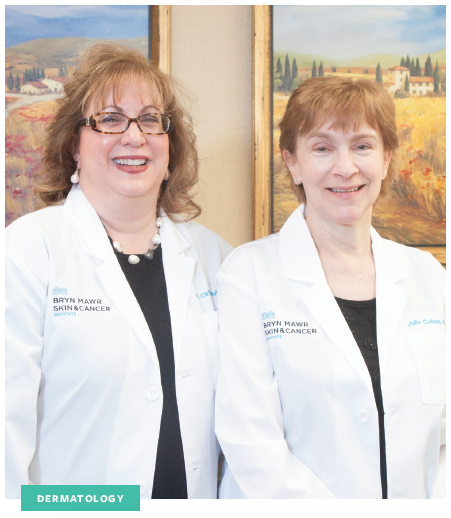
Q: What is your area of expertise at Bryn Mawr Skin & Cancer Institute?
Victoria A. Cirillo-Hyland, MD, FAAD, FASDS: I treat the most complex cases of skin cancer, including patients with actinic keratoses (pre-cancers), basal cell and squamous cell carcinomas, and malignant melanoma. Malignant melanoma is the most dangerous form of skin cancer, but if recognized and treated early it is almost always curable with surgical removal. If it is not caught early, melanoma can spread to other parts of the body, where it can be difficult to treat and can be fatal. The lifetime risk of getting melanoma in caucasians is 1 in 38.
Q: When should someone see a dermatologist?
Julia H. Cohen, MD, FAAD: If they have a relatively new, non-healing sore or bump,
an “ugly duckling” mole that looks different than all their other moles, or are at high
risk due to a strong family history of skin cancer, lots of sun exposure or are immune
suppressed. And, any rash, blemish or eruption that doesn’t resolve with home
remedies should be seen by your skin expert, the dermatologist.
Q: How can people recognize melanoma?
VC: We teach the “ABCDE” warning signs. “A” is for symmetry. If you draw a line
through the lesion and the two halves don’t match (asymmetrical), that is a warning
sign for melanoma. “B” is for border. The borders of an early melanoma tend to be
uneven or the edges may be notched or scalloped. C is for color. Having a variety of
colors in the lesion, such as browns, blacks, blues, whites or reds, is a warning sign. D is
for diameter. Melanomas are typically larger than an eraser head (¼ inch). However,
there are times when they are smaller when first detected. E is for evolving. If a lesion
changes in size, shape, elevation or color, or a new symptom like bleeding, crusting or
itching occurs, see a dermatologist.
Q: What are some of the specific treatments you offer at Cirillo Cosmetic Dermatology Spa?
VC: We use neuromodulators such as Botox, Dysport, and Xeomin to soften wrinkles.
The most popular areas we treat are frown and forehead lines, crow’s feet, upper lip lines and unwanted neck bands. We also offer the Juvederm and Restylane families of fillers as well as Sculptra and Radiesse to soften wrinkles and restore volume to aging faces and hands. State-of-the-art lights and lasers can help remove unwanted age/sun spots and blotchy red discolorations from the face and body. We also have techniques to remove unwanted facial and
body hair and to resurface and tighten the aging face, neck, chest and hands.
Q: What other services do you offer?
VC: We have the most advanced technology for body contouring and fat reduction. CoolSculpting, Vanquish Me, JuVaShape ultrasound and radiofrequency, and the Z
Wavepro offer every”body” a solution for these issues. Sclerotherapy with Asclera
is offered to treat spider veins on the legs. We also use lasers to remove unwanted
tattoos. If you are a cancer patient with unwanted radiation tattoos, we will remove
them free of charge and celebrate together.
Q: How does a person’s lifestyle choices affect the skin?
JC: Sun, smoking and excessive alcohol use all contribute to both premature aging and
the development of skin cancer. So, wear your sunscreen and live a healthy lifestyle!
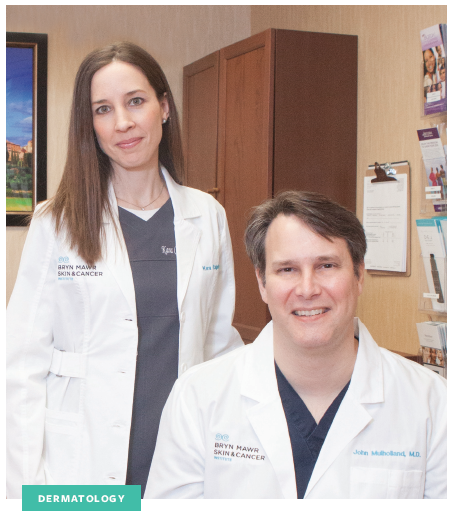
Q: What is Mohs surgery, when is it required and how effective is it?
Kara D. Capriotti, MD, FAAD: Mohs micrographic surgery removes specific types of skin cancer. The cancer is identified, local anesthesia is given, and then the surgeon removes a layer of tissue. While the patient waits, the tissue is processed in an on-site lab, and the surgeon examines it under a microscope. If any cancer cells remain, the surgeon removes another layer of tissue
while sparing as much healthy tissue as possible.
This is repeated until no cancer cells remain. The cure rate with Mohs surgery is between 97 percent and 99 percent for primary tumors, and 94 percent to 95 percent for skin cancer that has recurred after previous treatment.
Q: What are the most common dermatologic surgical procedures you perform?
KC: My practice consists mainly of skin cancer screenings and dermatologic surgery,
with Mohs surgery comprising most of my surgical cases. Oftentimes the wound created by the Mohs procedure can be sutured together relatively easily, while other times, the closure requires more advanced surgical techniques like a tissue flap orgraft. The unpredictable rhythm of each day is an aspect of the job that I most enjoy.
Q: When is the expertise of a surgical dermatologist required?
John K. Mulholland, MD, FAAD: Surgical dermatologists have unique abilities to identify skin cancers on the skin before and during surgery. This, along with specific training in the various types of skin cancers and their treatment, allows determination of proper margins to both
ensure successful removal of the lesion and reduce scarring.
Q: What are the most common dermatologic surgical procedures you perform?
JM: The most common dermatologic surgical procedures I perform are excisions of
skin cancers including basal cell, squamous cell and melanoma as well as Mohs surgery with special attention to careful cosmetic closure. In addition, I perform cosmetic removals of various benign skin lesions.
Q: Dermatopathology is a very specialized field, can you explain what it involves?
JM: Dermatopathology is a subspecialty of pathology that deals almost exclusively
with the interpretation of skin biopsies. It requires fellowship training (an additional
year or two years) following either a four- to five-year dermatology or pathology residency.
During the fellowship period, the trainee is closely taught at the microscope by a mentor through the examination of tens of thousands of individual skin biopsies.
Only after completion of this training is one eligible to sit for the dermatopathology
board exam given once a year by the American Board of Medical Specialties.
Q: Why is it important to have a dermatopathologist review your case?
JM: While general pathologists have experience with skin biopsies, only a board-certified dermatopathologist has the additional training and expertise required to interpret all skin biopsies, including rare diseases of the skin and difficult cases. There are relatively few board-certified dermatopathologists trained each year in the US, and their expertise is in demand given the rising awareness of skin cancer.


-updt.png)
